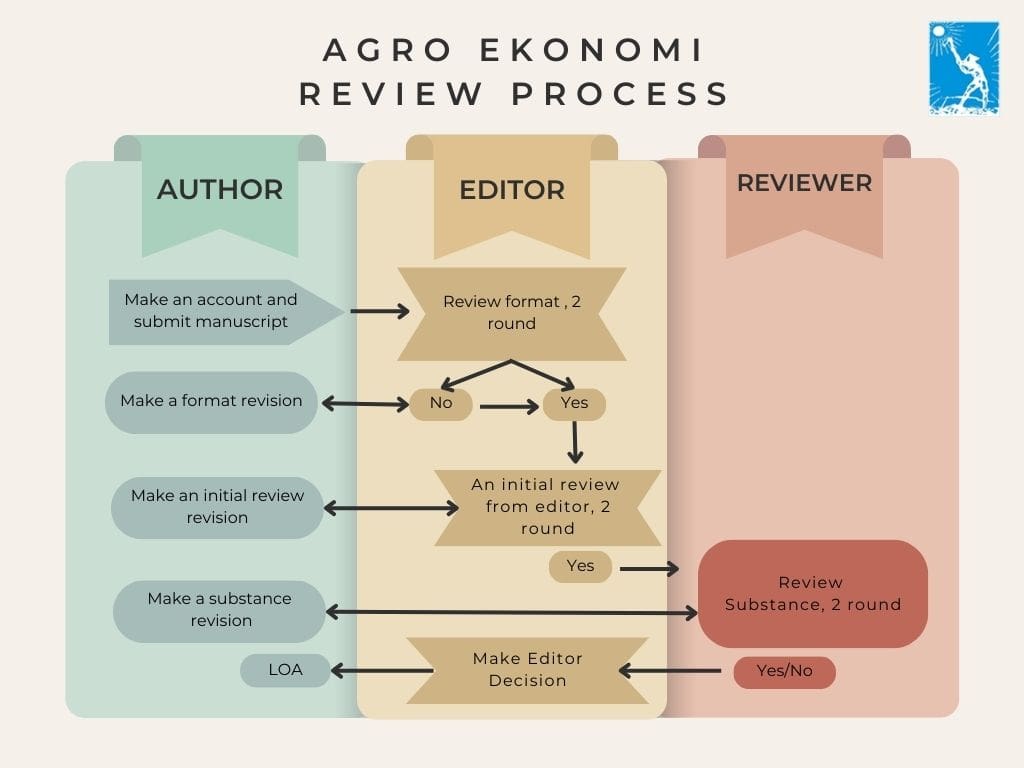Revealed Comparative Advantage (RCA) of Asean 5 Countries Watermelon in the Global Market
Saw Yan Naing(1*), Masyhuri Masyhuri(2), Dwidjono Hadi Darwanto(3)
(1) Department of Agricultural Socio Economics, Faculty of Agriculture, Universitas Gadjah Mada
(2) Department of Agricultural Socio Economics, Faculty of Agriculture, Universitas Gadjah Mada, UGM.
(3) Department of Agricultural Socio Economics, Faculty of Agriculture, Universitas Gadjah Mada, UGM.
(*) Corresponding Author
Abstract
Watermelon Citrullus Lanatus (Thunb) is an important commercial fruit crop in ASEAN. One way to improve economic growth is through trade and comparative advantage. There are very some researches regarding with comparative advantage of watermelon trade in ASEAN. The purpose of this article is to determine the comparative advantage of watermelon trade in five ASEAN member countries. This article uses secondary data only. Watermelon trade data covering the six years period 2014-2019 were obtained from the United Nations Commodity Trade Statistics Database. This article applies the original index of the revealed comparative advantage (RCA) and revealed symmetric comparative advantage (RSCA) to find out the level of comparative advantage of watermelon commodity. Results show that Lao Peoples Democratic Republic, Myanmar and Viet Nam have a comparative advantage of watermelon trade in the global market. This study suggests that ASEAN 5 member nations should try to maintain its comparative advantage of watermelon exports in the international market.
Keywords
Full Text:
PDFReferences
ASEAN. (2015). ASEAN Economic Community Blueprint 2025. Jakarta.
ASEAN. (2020). Association of Southeast Asian Nations . Retrieved March 16, 2020, from https://asean.org/asean/about-asean/#
Balassa, B. (1965). Trade Liberalization and "Revealed" Comparative Advantage. The Manchestcr School, 33(2), 99-123.
Bank, W. (2020). Myanmar Economic Monitor : Myanmar in the Time of COVID-19. Washington, D.C.: World Bank Group.
Benalywa, Z. A. (2019). Revealed Comparative Advantage and Competitiveness of Broiler Meat Products in Malaysia and Selected Exporting Countries. International Journal of Business and Society, 20(1), 383-396.
Dalum, B., Laursen, K., & Villumsen, G. (1998). Structural Change in OECD Export Specialisation Patterns: de-specialisation and ‘stickiness’. International Review of Applied Economics, 12(3), 423-443.
Grubben, G. (2004). Plant resources of tropical Africa 2: vegetables. Wageningen, Netherlands: PROTA Foundation.
Hinloopen, J., & Marrewijk , C. V. (2001). On the empirical distribution of the Balassa index. Weltwirtschaftliches Archiv, 137, 1-35.
Hoang, V. V., Tran, K. T., & Tu, B. V. (2017). Assessing the Agricultural Competitive Advantage by the RTA index: A Case Study in Vietnam. AGRIS on-line Papers in Economics and Informatics, 9(4), 53-67.
Kea , S., Li , H., Shahriar, S., & Abdullahi, N. M. (2020). Relative export competitiveness of the Cambodian rice sector. British Food Journal, 122(12), 3757-3778.
Khai, N., Ismail, M., & Sidique, S. (2016). Consistency tests of comparative advantage measures: An empirical evidence from the Malaysian and selected Asian shrimp products. International Food Research Journal, 23(6), 2752-2758.
Miller, W. F. (1993). Building Comparative Advantage. Foreign Trade Review, 27(4), 355-361.
Mizik, T. (2021). Theory vs practice: Patterns of the ASEAN-10 agri-food trade. Open Agriculture, 6(1), 152-167.
Mizik, T., Szerletics, Á., & Jámbor, A. (2020). Agri-Food Export Competitiveness of the ASEAN Countries. Sustainability, 12(23).
Nutjaree, C., Barbaso, A., Wulansari, N., & Priambudi, F. M. (2017). Empirical Study of Export Competitiveness of Agricultural Products in ASEAN 3: Revealed Comparative Advantage (RCA) Approach. The 3rd International Conference on Economics, Business, and Accounting Studies (ICEBAST) 2017, (pp. 95-100).
Prohens, J., & Nuez, F. (2008). VEGETABLES I Asteraceae, Brassicaceae, Chenopodicaceae, and Cucurbitaceae (1 ed., Vol. 1). Springer-Verlag New York.
Ricardo, D. (1817). On the Principles of Political Economy and Taxation. Canada: Batoche Books.
Rossato, F. G. (2018). Comparison of revealed comparative advantage indexes with application to trade tendencies of cellulose production from planted forests in Brazil,Canada, China, Sweden, Finland and the United States. Forest Policy and Economics, 97, 59-66.
Suranovic, S. (2009). Policy and Theory of International Trade (Vol. 1).
UNCOMTRADE. (2020). UN Comtrade Database. Retrieved October 16, 2020, from https://comtrade.un.org/
Wijesinghe, S., Evans, L., Kirkland, L., & Rader, R. (2020). A global review of watermelon pollination biology and ecology: The increasing importance of seedless cultivars. Scientia Horticulturae, 271.
Zhang , H., & Chen, K. (2018). Assessing Agricultural Trade Comparative Advantage of Myanmar and Its Main Competitors. International Association of Agricultural Economists (IAAE), (pp. 1-27).
Article Metrics
Refbacks
Copyright (c) 2021 Agro Ekonomi

This work is licensed under a Creative Commons Attribution-ShareAlike 4.0 International License.
View My Stats











